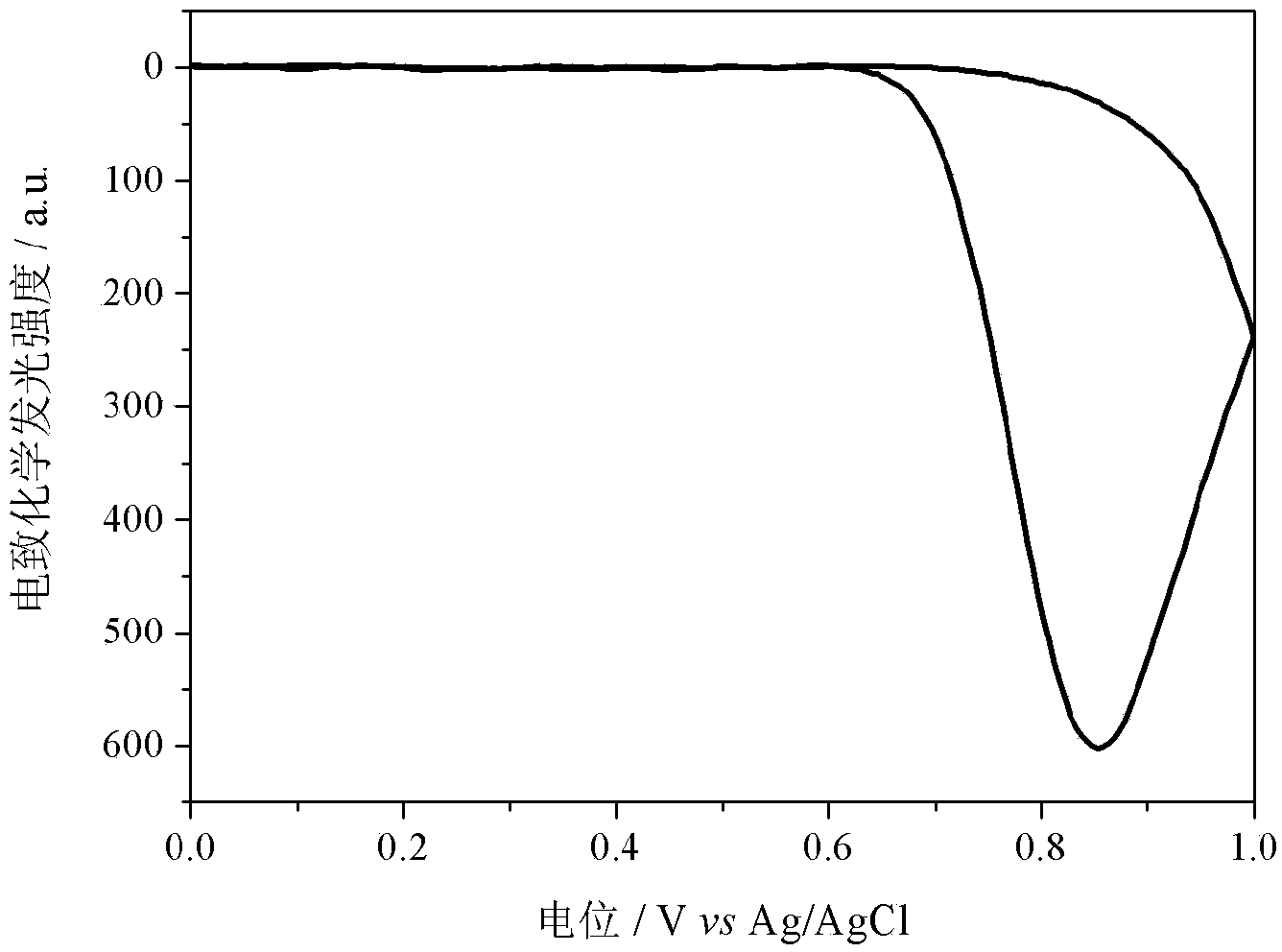Near-infrared electro-generated chemiluminescence immunodetection method
A technology of electrochemistry and luminescence immunity, which is applied in the fields of chemiluminescence/bioluminescence, analysis by causing chemical reactions of materials, and measurement devices, etc. It can solve the problem of inability to effectively eliminate the background interference of biological tissues, high ECL excitation potential, and difficult to overcome Interference and other issues, to avoid background light interference of biological tissue, to avoid electrochemical process interference, high sensitivity and accuracy
- Summary
- Abstract
- Description
- Claims
- Application Information
AI Technical Summary
Problems solved by technology
Method used
Image
Examples
Embodiment 1
[0045] A near-infrared electrochemiluminescence immunoassay method, the steps are as follows:
[0046] A gold electrode with a diameter of 5.0mm is selected as the carrier material, and alpha-fetoprotein antigen is used as the detection object:
[0047] Step 1. Label the secondary antibody with near-infrared quantum dots as a marker:
[0048] Disperse cadmium telluride (CdTe) quantum dots with carboxyl groups on the surface (the fluorescence radiation wavelength is 780nm) in a solution containing 100 mg / mL 1-ethyl-3-3-dimethylaminopropyl carbodiimide and 100 mg / mL N -In the phosphate buffer of hydroxysuccinimide, add the secondary antibody, vortex to mix and oscillate evenly, react at room temperature, centrifuge the reaction solution, and wash 3 times with phosphate buffer to obtain the quantum dot-labeled secondary antibody;
[0049] Step 2, surface treatment of gold electrodes:
[0050] After polishing the gold electrode with α-alumina polishing powder (0.5-0.7 μm), immer...
Embodiment 2
[0056] A near-infrared electrochemiluminescence immunoassay method, the steps are as follows:
[0057] A gold electrode with a diameter of 5.0mm is selected as the carrier material, and alpha-fetoprotein antigen is used as the detection object:
[0058] Step 3: In the second step, 10 μL of phosphate buffer solution containing 40.0 ng / mL alpha-fetoprotein antigen (Ag) was selected to be drip-coated on the electrode, and other steps were the same as in Example 1.
Embodiment 3
[0060] A near-infrared electrochemiluminescence immunoassay method, the steps are as follows:
[0061] A gold electrode with a diameter of 5.0mm is selected as the carrier material, and alpha-fetoprotein antigen is used as the detection object:
[0062] Step 3: In the second step, 10 μL of phosphate buffer solution containing 10.0 ng / mL alpha-fetoprotein antigen (Ag) or treated patient serum sample was selected to be drip-coated on the electrode, and other steps were the same as in Example 1.
PUM
| Property | Measurement | Unit |
|---|---|---|
| diameter | aaaaa | aaaaa |
Abstract
Description
Claims
Application Information
 Login to View More
Login to View More - R&D
- Intellectual Property
- Life Sciences
- Materials
- Tech Scout
- Unparalleled Data Quality
- Higher Quality Content
- 60% Fewer Hallucinations
Browse by: Latest US Patents, China's latest patents, Technical Efficacy Thesaurus, Application Domain, Technology Topic, Popular Technical Reports.
© 2025 PatSnap. All rights reserved.Legal|Privacy policy|Modern Slavery Act Transparency Statement|Sitemap|About US| Contact US: help@patsnap.com



